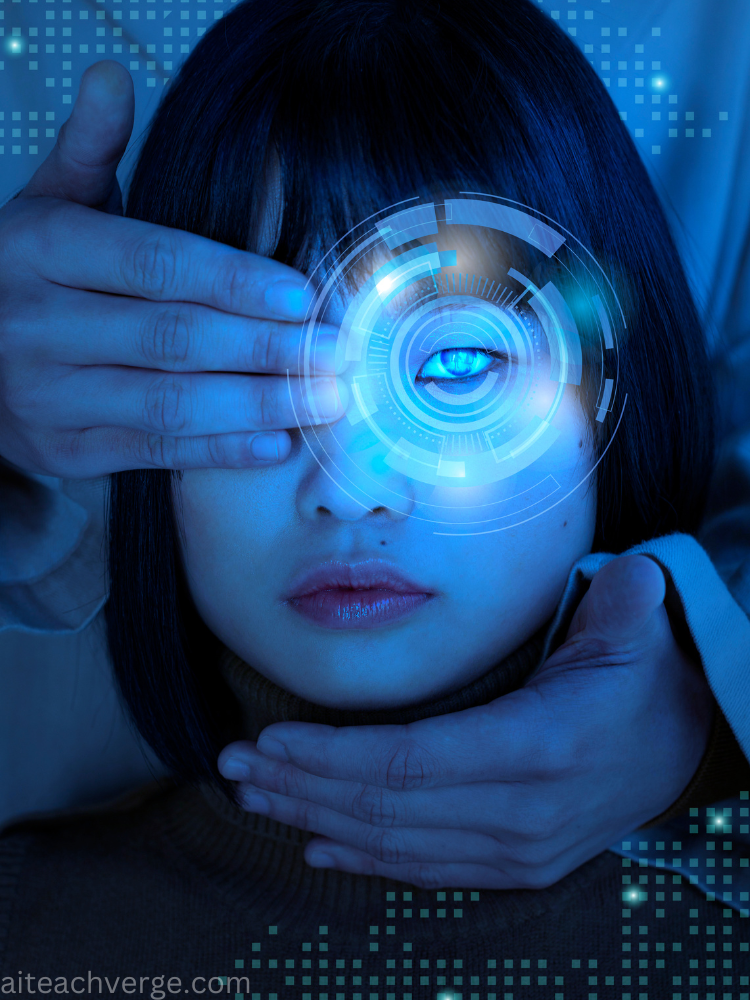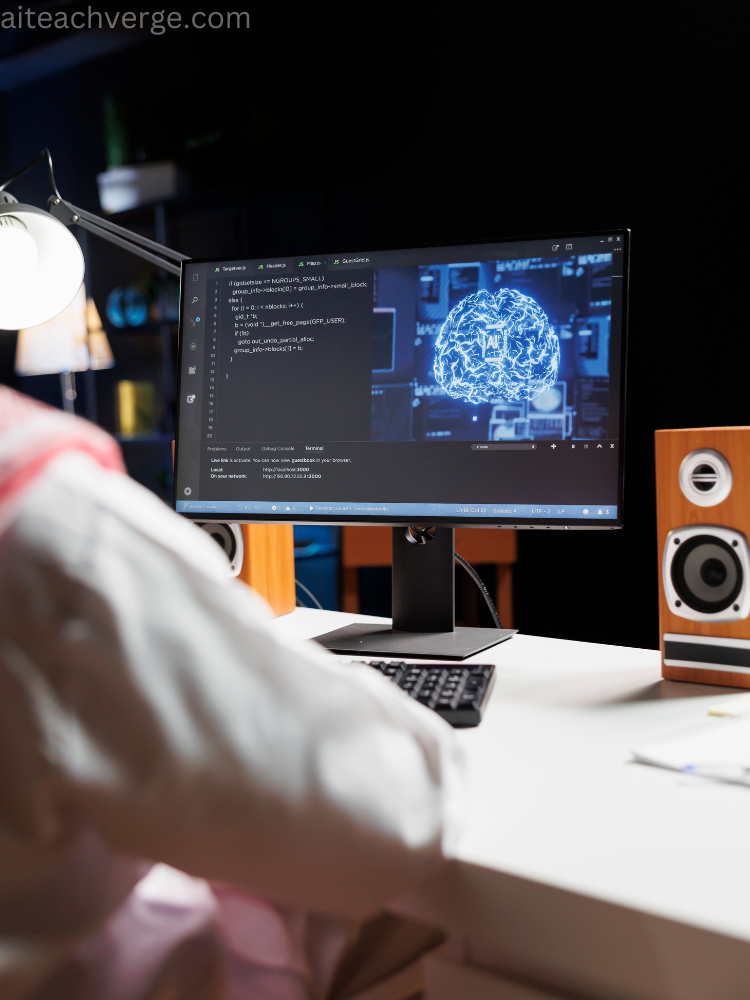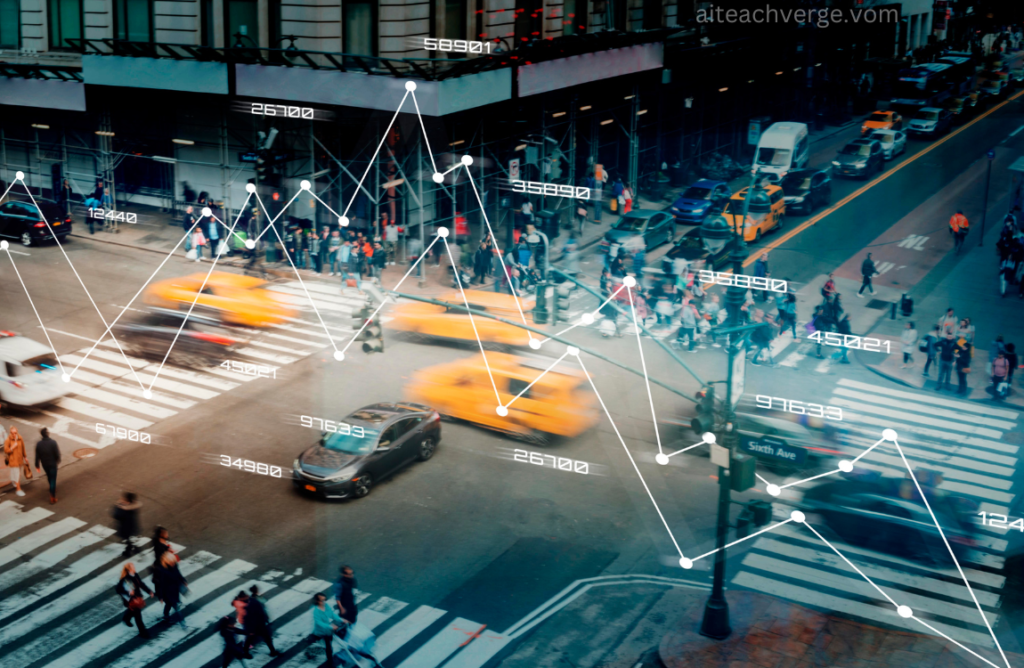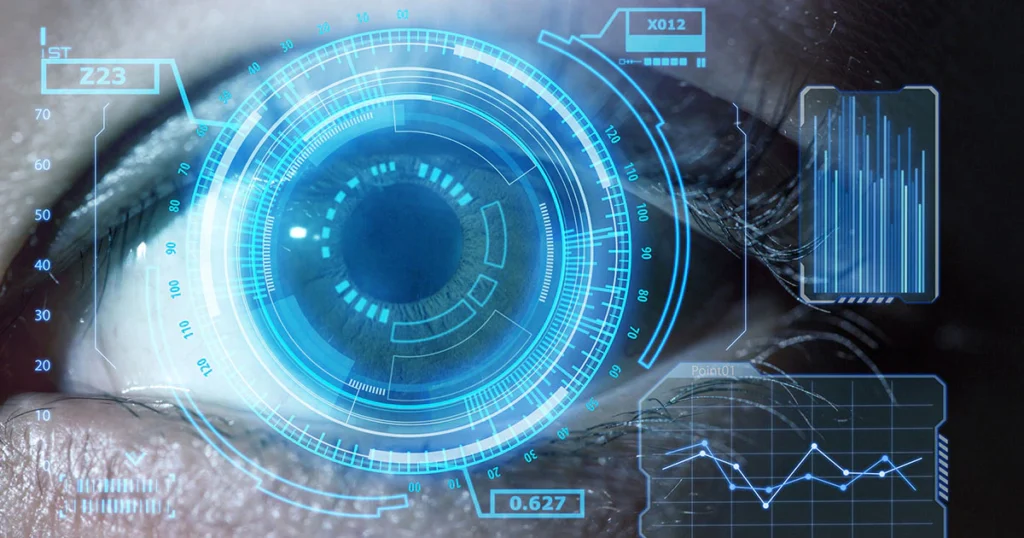“Imagine a world where machines can see, interpret, and understand visual data like humans do Welcome to the realm of computer vision, a subset of artificial intelligence (AI) that’s revolutionizing the way we live and work. From self-driving cars to medical diagnosis, computer vision is transforming industries and enabling machines to make sense of the visual world. In this article, we’ll delve into the definition, importance, and applications of computer vision in AI, and explore the exciting possibilities it holds for our future.”
Understanding Image Representation, Filtering, and Enhancement Techniques
When we upload a photo to social media or share a snapshot with friends, we rarely think about the intricate processes that make it possible for computers to understand and display visual data. Yet, image representation, filtering, and enhancement techniques are the unsung heroes of computer vision, enabling machines to interpret and improve images in astonishing ways computer vision artificial intelligence.
Image Representation
Imagine you’re on a scenic hike, capturing breathtaking views with your smartphone. The camera sensor converts the visual data into a digital format, comprising millions of pixels. These pixels are represented as numerical values, forming a matrix that computers can process. This representation is crucial, as it allows algorithms to manipulate and analyze the image computer vision artificial intelligence.
Filtering
Ever used Instagram filters to enhance your photos? Filtering techniques are the magic behind these effects! They remove noise, correct colors, and sharpen images, making them more visually appealing. In medical imaging, filtering helps doctors spot tumors or fractures by highlighting specific features. Even self-driving cars rely on filtering to detect lanes, pedestrians, and obstacles computer vision artificial intelligence.
Enhancement
Remember the iconic “Enhance!” scenes from movies like Blade Runner or CSI, where investigators zoom in on grainy footage to reveal crucial clues? Enhancement techniques make this possible. They amplify specific features, like edges or textures, to improve image quality. In astronomy, enhancement helps scientists study distant stars and galaxies, while in security, it aids facial recognition and object detection computer vision artificial intelligence.
Image Segmentation and Classification: Unraveling the Power of Regions
Imagine you’re a doctor examining a patient’s X-ray to diagnose a fracture. Or, picture a self-driving car navigating through a busy street, identifying pedestrians, lanes, and obstacles. In both cases, the ability to divide images into regions and categorize them based on characteristics is crucial. This process, known as image segmentation and classification, is a fundamental aspect of computer vision.
Image Segmentation
Segmentation is like solving a puzzle, where the image is divided into distinct regions or objects. This technique helps machines understand the composition of an image, identifying specific features like shapes, textures, and colors. In medical imaging, segmentation aids in detecting tumors, organs, or tissues. In retail, it helps with product recognition and inventory management computer vision artificial intelligence.
Classification
Classification takes segmentation a step further, assigning labels or categories to each region or object. It’s like categorizing books on a shelf – machines learn to group similar objects together based on their characteristics. In security, classification helps identify suspicious behavior or objects, while in agriculture, it enables crop monitoring and yield prediction computer vision artificial intelligence.
Real-Life Examples
- Medical Diagnosis: Segmentation and classification help doctors identify cancer cells, detect brain tumors, or analyze MRI scans.
- Autonomous Vehicles: Self-driving cars rely on segmentation and classification to detect pedestrians, lanes, traffic signals, and obstacles.
- Product Recognition: Retailers use segmentation and classification to identify products, manage inventory, and prevent shoplifting.
- Agricultural Monitoring: Farmers use segmentation and classification to monitor crop health, detect pests, and predict yields.
By dividing images into regions and categorizing them based on characteristics, machines can make sense of the visual world, enabling groundbreaking applications in healthcare, transportation, retail, and more. As computer vision continues to evolve, we’ll uncover even more innovative ways to harness the power of image segmentation and classification computer vision artificial intelligence.
Revolutionizing Image Analysis

Imagine a world where machines can see and understand images like humans do. Welcome to the realm of neural networks, a subset of machine learning that’s transforming image analysis and feature extraction. Inspired by the human brain, neural networks are composed of layers of interconnected nodes or “neurons” that learn and adapt to recognize patterns and make predictions computer vision artificial intelligence.
Image Analysis and Feature Extraction
Neural networks are particularly adept at image analysis, enabling machines to extract valuable insights and features from visual data. This is achieved through a process called deep learning, where neural networks are trained on vast amounts of data to recognize patterns, classify objects, and detect anomalies.
Real-Life Examples
- Facebook’s Facial Recognition: Neural networks power Facebook’s facial recognition feature, allowing users to tag friends and family in photos.
- Google’s Image Search: Neural networks enable Google to recognize and categorize images, making search results more accurate and relevant.
- Self-Driving Cars: Neural networks are used in autonomous vehicles to detect objects, pedestrians, and lanes, enabling safe navigation.
- Medical Diagnosis: Neural networks aid in medical imaging analysis, helping doctors detect tumors, diagnose diseases, and develop personalized treatment plans.
Human Touch
Neural networks have the potential to revolutionize industries and improve lives. For instance, they can help:
- Doctors diagnose diseases more accurately and quickly
- Engineers develop more efficient and safe autonomous systems
- Researchers uncover new insights and patterns in data
- Artists create stunning visuals and generative art
By leveraging neural networks for image analysis and feature extraction, we’re unlocking new possibilities for machines to understand and interact with the visual world. As this technology continues to evolve, we’ll witness even more groundbreaking applications that transform industries and improve lives.
How Computer Vision AI is Transforming Medical Imaging and Surveillance

Computer vision AI is revolutionizing healthcare by enhancing medical imaging and surveillance, enabling doctors to diagnose and treat diseases more accurately and efficiently. This technology is giving medical professionals a second pair of “eyes” to spot abnormalities, detect rare conditions, and save lives computer vision artificial intelligence.
Medical Imaging
Computer vision AI is transforming medical imaging by:
- Automating detection: Identifying tumors, fractures, and other conditions with precision and speed
- Enhancing image quality: Improving resolution and clarity for better diagnosis
- Assisting in analysis: Helping doctors spot rare conditions and anomalies
Real-Life Examples
- Cancer Detection: AI-powered computer vision helps detect breast cancer from mammography images with high accuracy
- Retinal Diagnosis: AI-assisted computer vision detects diabetic retinopathy and age-related macular degeneration from retinal scans
- Cardiac Imaging: Computer vision AI enhances MRI and CT scans to diagnose cardiovascular diseases
Surveillance
Computer vision AI is also transforming surveillance in healthcare by:
- Monitoring patient safety: Detecting falls, wandering, and other safety risks in real-time
- Tracking infections: Identifying potential outbreaks and alerting staff to take action
- Streamlining workflows: Automating tasks and freeing up staff to focus on patient care
Human Touch
Computer vision AI in medical imaging and surveillance is having a profound impact on human lives. It’s:
- Saving lives: Enabling early detection and treatment of life-threatening conditions
- Improving patient care: Enhancing the accuracy and efficiency of medical diagnosis and treatment
- Reducing costs: Streamlining workflows and reducing the need for repeated tests and procedures
By embracing computer vision AI in medical imaging and surveillance, we’re empowering medical professionals to provide better care, improving patient outcomes, and saving lives computer vision artificial intelligence.
Addressing Common Issues and Constraints in Computer Vision AI Development

As computer vision AI continues to revolutionize industries, developers face a unique set of challenges that can make or break project success. From data quality to ethical considerations, addressing these common issues and constraints is crucial for harnessing the full potential of computer vision AI computer vision artificial intelligence.
Data Quality and Availability
High-quality, diverse, and abundant data is the backbone of computer vision AI. However,:
- Data scarcity: Limited data in niche domains hinders model training and accuracy
- Data bias: Biased data leads to biased models, perpetuating existing social inequalities
Data privacy: Ensuring data privacy and security is essential, especially in sensitive applications like healthcare
Real-Life Examples
- Autonomous vehicles: Limited data on rare scenarios and edge cases hinders development
- Medical diagnosis: Data bias can lead to incorrect diagnoses and treatment plans
- Facial recognition: Data privacy concerns and bias in facial recognition systems raise ethical concerns
Computational Resources and Scalability
Computer vision AI requires significant computational resources, posing challenges in:
- Scalability: Handling large datasets and high-volume processing demands
- Hardware limitations: Insufficient GPU power, memory, and storage hinder model training and deployment
Cloud infrastructure: Managing cloud resources, costs, and security for large-scale computer vision AI projects
Real-Life Examples
- Google’s AlphaGo: Required massive computational resources to defeat the world’s top Go player
- Facebook’s facial recognition: Processes billions of images daily, necessitating robust infrastructure
Medical imaging analysis: Demands high-performance computing for accurate diagnosis and treatment
Ethical Considerations
Computer vision AI raises ethical concerns, including:
- Bias and discrimination: Models may perpetuate existing social inequalities
- Privacy and security: Ensuring data privacy and security in sensitive applications
Transparency and explainability: Understanding AI decision-making processes
Human Touch
Addressing these common issues and constraints requires a human-centered approach, prioritizing:
- Diverse and inclusive teams: Developing AI that serves diverse populations
- Ethical considerations: Ensuring AI aligns with human values and moral principles
- Continuous learning: Staying up-to-date with evolving technologies and best practices
By acknowledging and tackling these challenges head-on, we can develop more effective, ethical, and responsible computer vision AI solutions that positively impact society computer vision artificial intelligence.
Emerging Trends and Potential Applications in Autonomous Vehicles and Beyond


As computer vision AI continues to advance, it’s transforming industries and revolutionizing the way we live and work. Emerging trends and potential applications in areas like autonomous vehicles, healthcare, and security are poised to make a significant impact on our daily lives.
Autonomous Vehicles
Autonomous vehicles are at the forefront of computer vision AI innovation, with:
- Level 5 Autonomy: Achieving fully autonomous driving without human intervention
- Edge Case Scenarios: Developing AI that can handle rare and unexpected events
- Multi-Agent Systems: Enabling vehicles to communicate and navigate complex environments
Real-Life Examples
- Waymo’s Self-Driving Taxis: Transporting passengers in Phoenix, Arizona
- Tesla’s Autopilot: Enhancing safety and convenience for drivers worldwide
- Ford’s Autonomous Delivery: Revolutionizing logistics and package delivery
Healthcare
Computer vision AI is also transforming healthcare, with:
- Medical Imaging Analysis: Enhancing diagnosis accuracy and speed
- Disease Detection: Identifying rare conditions and improving patient outcomes
- Personalized Medicine: Developing tailored treatment plans with AI-assisted analysis
Real-Life Examples
- AI-Assisted Cancer Detection: Improving diagnosis accuracy and saving lives
- Retinal Diagnosis: Detecting diabetic retinopathy and age-related macular degeneration
- Cardiac Imaging: Enhancing MRI and CT scans for better cardiovascular diagnosis
Security and Surveillance
Computer vision AI is enhancing security and surveillance, with:
- Facial Recognition: Improving identity verification and public safety
- Object Detection: Identifying potential threats and anomalies
- Smart Cities: Developing intelligent infrastructure for safer communities
Real-Life Examples
- Airport Security: Enhancing passenger screening and safety
- Smart Homes: Automating security and convenience with AI-powered surveillance
- Public Safety: Improving emergency response times and situational awareness
Human Touch
As computer vision AI continues to advance, it’s crucial to prioritize the human touch, ensuring that:
- Diverse and inclusive teams develop AI that serves diverse populations
- Ethical considerations are integrated into AI decision-making processes
- Continuous learning and improvement are prioritized to address emerging challenges
Examining Privacy, Bias, and Accountability in Computer Vision AI Systems
As computer vision AI becomes increasingly pervasive, it’s crucial to examine the ethical implications of these systems. Privacy, bias, and accountability are essential concerns that require attention to ensure responsible AI development and deployment computer vision artificial intelligence.
Privacy
Computer vision AI systems often rely on vast amounts of visual data, raising concerns about:
- Data protection: Ensuring sensitive information remains confidential
- Informed consent: Obtaining user permission for data collection and usage
- Anonymization: Protecting individual identities in datasets
Real-Life Examples
- Facial recognition: Companies like Clearview AI and Amazon Rekognition have faced scrutiny over data privacy and usage
- Smart home devices: Devices like Amazon Echo and Google Home raise concerns about data collection and storage
- Public surveillance: Cities like San Francisco and Oakland have banned facial recognition technology due to privacy concerns
Bias
Computer vision AI systems can perpetuate and amplify existing biases, leading to:
- Discrimination: Biased models may unfairly target specific groups
- Inaccurate results: Biased data leads to inaccurate conclusions
- Reinforcing stereotypes: AI systems may perpetuate harmful stereotypes and biases
Real-Life Examples
- Facial recognition: Research has shown facial recognition systems struggle with accuracy for darker skin tones
- Gender and age bias: AI systems may misclassify or misgender individuals
- Healthcare disparities: Biased AI systems may exacerbate existing healthcare disparities
Accountability
Ensuring accountability in computer vision AI systems is crucial, including:
- Transparency: Understanding AI decision-making processes
- Explainability: Knowing why AI systems make certain decisions
- Responsibility: Holding developers and users accountable for AI actions
Real-Life Examples
- AI ethics boards: Companies like Google and Microsoft have established ethics boards to oversee AI development
- Regulatory efforts: Governments are implementing regulations like the EU’s GDPR to ensure accountability
- Research initiatives: Academics and researchers are working to develop more transparent and explainable AI systems
Human Touch
Addressing privacy, bias, and accountability in computer vision AI systems requires a human-centered approach, prioritizing:
- Diverse and inclusive teams: Developing AI that serves diverse populations
- Ethical considerations: Integrating ethical thinking into AI development
- Continuous learning: Staying up-to-date with evolving technologies and best practices


Pingback: computer vision AI examples - aitechverge.com
Pingback: virtual marketing assistant - aitechverge.com
Your advice on email marketing conversion optimization has been helpful.
AI optimizes ad placement targeting.
Pingback: ai roll in computer generation - aitechverge.com
Email list growth tactics leverage partnerships for acquisition.